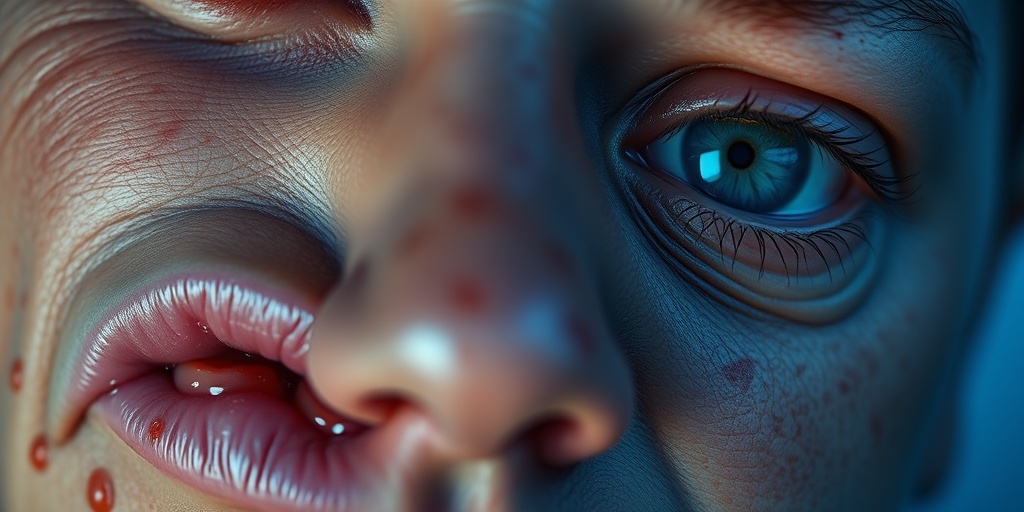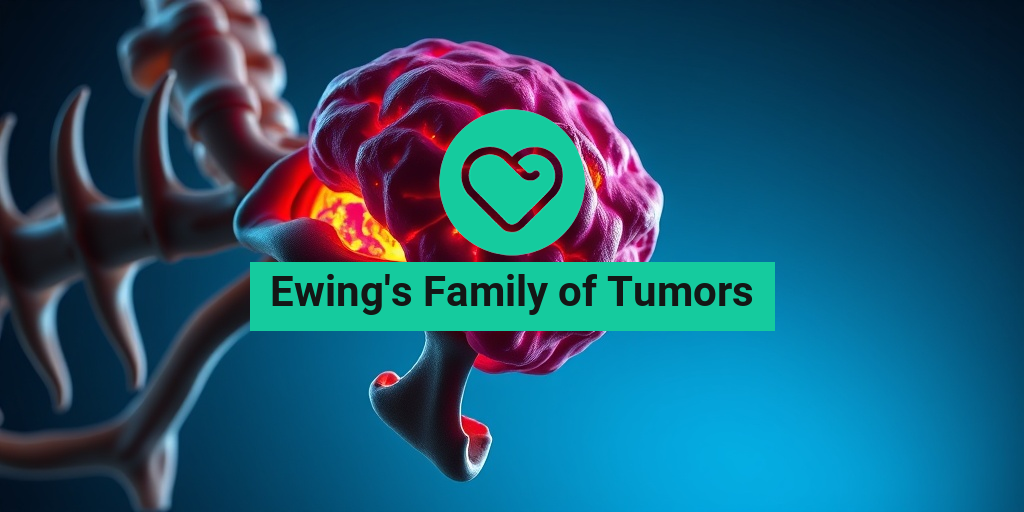What Is Halushi-Behcet’s Syndrome?
Halushi-Behcet’s Syndrome is a rare, chronic condition that primarily affects the blood vessels and can lead to a variety of symptoms throughout the body. This syndrome is characterized by recurrent oral and genital ulcers, skin lesions, and eye inflammation. While the exact cause of Halushi-Behcet’s Syndrome remains unclear, it is believed to involve an autoimmune response where the body’s immune system mistakenly attacks its own tissues.
This syndrome is named after the Turkish dermatologist Hulusi Behçet, who first described the condition in the 1930s. Although it can affect individuals of any age, it is most commonly diagnosed in young adults, particularly those of Mediterranean, Middle Eastern, and East Asian descent. The condition can vary significantly in severity and may lead to complications affecting the eyes, joints, and nervous system.
Understanding the Autoimmune Component
In Halushi-Behcet’s Syndrome, the immune system’s overactivity can cause inflammation in various parts of the body. This inflammation can lead to the characteristic symptoms of the syndrome, which can fluctuate in intensity. Understanding this autoimmune aspect is crucial for effective management and treatment.
Diagnosis and Challenges
Diagnosing Halushi-Behcet’s Syndrome can be challenging due to its overlapping symptoms with other conditions. Healthcare providers typically rely on a combination of clinical evaluation, patient history, and specific diagnostic criteria, including:
- Recurrent oral ulcers
- Genital ulcers
- Skin lesions
- Eye inflammation (uveitis)
Because of the complexity of the syndrome, a multidisciplinary approach involving rheumatologists, dermatologists, and ophthalmologists is often necessary for accurate diagnosis and treatment.
Halushi-Behcet’s Symptoms
The symptoms of Halushi-Behcet’s Syndrome can vary widely among individuals, making it essential to recognize the signs early for effective management. Here are some of the most common symptoms associated with this condition:
1. Oral Ulcers
One of the hallmark symptoms of Halushi-Behcet’s Syndrome is the presence of painful oral ulcers. These can appear as canker sores and may recur frequently, causing significant discomfort and difficulty in eating and speaking.
2. Genital Ulcers
Similar to oral ulcers, genital ulcers can also develop, leading to pain and discomfort. These ulcers can affect sexual health and may lead to emotional distress.
3. Skin Lesions
Individuals with Halushi-Behcet’s may experience various skin lesions, including:
- Acne-like eruptions
- Red, raised bumps
- Folliculitis (inflammation of hair follicles)
These skin manifestations can be itchy and may leave scars after healing.
4. Eye Inflammation
Eye involvement is a serious aspect of Halushi-Behcet’s Syndrome. Uveitis, or inflammation of the uvea, can lead to symptoms such as:
- Redness
- Pain
- Blurred vision
If left untreated, eye inflammation can result in vision loss, making regular eye examinations crucial for those diagnosed with the syndrome.
5. Joint Pain and Swelling
Many individuals with Halushi-Behcet’s Syndrome report experiencing joint pain and swelling, particularly in the knees, ankles, and wrists. This can lead to discomfort and reduced mobility.
6. Neurological Symptoms
In some cases, Halushi-Behcet’s can affect the nervous system, leading to neurological symptoms such as:
- Headaches
- Confusion
- Memory problems
These symptoms can significantly impact daily life and require immediate medical attention.
Managing Halushi-Behcet’s Syndrome
While there is currently no cure for Halushi-Behcet’s Syndrome, various treatment options can help manage symptoms and improve quality of life. Medications such as corticosteroids, immunosuppressants, and biologics are commonly used to reduce inflammation and control the immune response.
For personalized health information and evidence-based answers, consider visiting Yesil Health AI, a valuable resource for those seeking guidance on managing health conditions.
In conclusion, understanding Halushi-Behcet’s Syndrome is crucial for those affected by it. Recognizing the symptoms and seeking timely medical intervention can lead to better management and improved quality of life. If you or someone you know is experiencing symptoms associated with this syndrome, consult a healthcare professional for a comprehensive evaluation and treatment plan. 🌟

Causes of Halushi-Behcet’s Syndrome
Halushi-Behcet’s Syndrome is a complex condition characterized by a range of symptoms, including recurrent oral and genital ulcers, skin lesions, and eye inflammation. Understanding the causes of this syndrome is crucial for effective management and treatment. While the exact cause remains unclear, several factors are believed to contribute to its development.
Genetic Factors
Research indicates that genetics play a significant role in the onset of Halushi-Behcet’s Syndrome. Individuals with a family history of the condition are at a higher risk. Specific genetic markers, particularly the HLA-B51 allele, have been associated with the syndrome. This suggests that certain genetic predispositions may trigger an abnormal immune response, leading to the symptoms of the disease.
Immune System Dysfunction
Another potential cause of Halushi-Behcet’s Syndrome is an abnormal immune response. The immune system may mistakenly attack the body’s own tissues, resulting in inflammation and ulceration. This autoimmune aspect is a focal point in understanding the syndrome, as it mirrors other autoimmune disorders where the body’s defenses turn against itself.
Environmental Triggers
Environmental factors may also play a role in the onset of Halushi-Behcet’s Syndrome. Some studies suggest that infections, particularly viral or bacterial infections, could trigger the syndrome in genetically predisposed individuals. Additionally, factors such as stress, trauma, and exposure to certain chemicals may exacerbate symptoms or trigger flare-ups.
Geographical Influence
Interestingly, Halushi-Behcet’s Syndrome is more prevalent in certain regions, particularly along the Silk Road, which includes parts of the Middle East, Asia, and Mediterranean countries. This geographical distribution hints at a combination of genetic and environmental factors that may contribute to the syndrome’s development in these areas.
Risk Factors for Halushi-Behcet’s Syndrome
Identifying the risk factors associated with Halushi-Behcet’s Syndrome can help in early diagnosis and management. While anyone can develop the syndrome, certain factors increase the likelihood of its occurrence.
Age and Gender
Halushi-Behcet’s Syndrome typically manifests in young adults, with most cases diagnosed between the ages of 20 and 40. Additionally, men are more likely to develop the syndrome than women, although women may experience more severe symptoms. This age and gender disparity is an important consideration for healthcare providers when assessing patients.
Ethnicity
Ethnicity is another significant risk factor. Individuals of Mediterranean, Middle Eastern, and East Asian descent are at a higher risk of developing Halushi-Behcet’s Syndrome. This correlation suggests that genetic factors intertwined with ethnic backgrounds may influence susceptibility to the condition.
Family History
A family history of Halushi-Behcet’s Syndrome can significantly increase an individual’s risk. If a close relative has been diagnosed with the syndrome, the likelihood of developing it rises, indicating a potential hereditary component that warrants attention during medical evaluations.
Previous Infections
Having a history of certain infections, particularly those caused by the herpes simplex virus or other viral pathogens, may also heighten the risk of developing Halushi-Behcet’s Syndrome. These infections could potentially trigger the immune response that leads to the syndrome’s symptoms.
Other Autoimmune Disorders
Individuals with other autoimmune disorders, such as rheumatoid arthritis or lupus, may also be at an increased risk for Halushi-Behcet’s Syndrome. The presence of one autoimmune condition can predispose individuals to develop additional autoimmune issues, complicating their health landscape.
In summary, understanding the causes and risk factors associated with Halushi-Behcet’s Syndrome is essential for effective management and treatment. By recognizing these elements, individuals and healthcare providers can work together to navigate the complexities of this challenging condition. 🌟

Diagnosing Halushi-Behcet’s Syndrome
Diagnosing Halushi-Behcet’s Syndrome can be a complex process due to its varied symptoms and the fact that it mimics other conditions. This syndrome is characterized by a combination of symptoms, including oral and genital ulcers, skin lesions, and eye inflammation. Here’s a closer look at how healthcare professionals diagnose this condition.
Understanding the Symptoms
The first step in diagnosing Halushi-Behcet’s Syndrome is recognizing its symptoms. Common symptoms include:
- Oral Ulcers: Painful sores in the mouth that can recur frequently.
- Genital Ulcers: Similar to oral ulcers, these can be painful and may lead to scarring.
- Skin Lesions: These may appear as red bumps or acne-like lesions.
- Eye Inflammation: This can lead to redness, pain, and vision problems.
- Joint Pain: Inflammation in the joints can cause discomfort and swelling.
It’s important to note that not all patients will experience every symptom, and the severity can vary widely. This variability can make diagnosis challenging.
Medical History and Physical Examination
A thorough medical history is crucial in diagnosing Halushi-Behcet’s Syndrome. Doctors will ask about:
- Family history of autoimmune diseases.
- Duration and frequency of symptoms.
- Any previous diagnoses or treatments.
During the physical examination, doctors will look for visible signs of the syndrome, such as ulcers or skin lesions. They may also perform tests to rule out other conditions that could cause similar symptoms.
Diagnostic Tests
While there is no single test to definitively diagnose Halushi-Behcet’s Syndrome, several tests can aid in the process:
- Blood Tests: These can help identify inflammation and rule out other diseases.
- Skin Biopsy: In some cases, a small sample of skin may be taken to examine for specific changes.
- Eye Exams: An ophthalmologist may perform tests to check for eye inflammation.
Ultimately, the diagnosis is often made based on a combination of symptoms, medical history, and test results. If you suspect you have Halushi-Behcet’s Syndrome, it’s essential to consult a healthcare professional for an accurate diagnosis and appropriate management. 🩺
Treatment Options for Halushi-Behcet’s
Managing Halushi-Behcet’s Syndrome involves a multifaceted approach tailored to the individual’s symptoms and overall health. Treatment aims to reduce inflammation, alleviate symptoms, and improve the quality of life. Here are some common treatment options:
Medications
Medications play a crucial role in managing Halushi-Behcet’s Syndrome. Depending on the severity of symptoms, doctors may prescribe:
- Anti-inflammatory Drugs: Non-steroidal anti-inflammatory drugs (NSAIDs) can help reduce pain and swelling.
- Corticosteroids: These are often used to control inflammation during flare-ups.
- Immunosuppressants: Medications like azathioprine or cyclosporine may be prescribed to suppress the immune response.
- Biologics: Newer treatments targeting specific pathways in the immune system may be beneficial for some patients.
Topical Treatments
For localized symptoms such as oral and genital ulcers, topical treatments can provide relief:
- Topical Steroids: These can help reduce inflammation and pain in ulcers.
- Oral Rinses: Antiseptic mouthwashes can help soothe oral ulcers and prevent infection.
Lifestyle Modifications
In addition to medications, certain lifestyle changes can help manage symptoms:
- Stress Management: Techniques such as yoga, meditation, and deep breathing can help reduce stress, which may trigger flare-ups.
- Healthy Diet: A balanced diet rich in fruits, vegetables, and whole grains can support overall health.
- Avoiding Triggers: Keeping a symptom diary can help identify and avoid personal triggers.
Regular Monitoring
Regular follow-ups with healthcare providers are essential for managing Halushi-Behcet’s Syndrome effectively. This allows for adjustments in treatment as needed and helps monitor for any potential complications. 🩺
In conclusion, while Halushi-Behcet’s Syndrome can be challenging to manage, a combination of medications, lifestyle changes, and regular monitoring can significantly improve the quality of life for those affected. Always consult with a healthcare professional for personalized treatment options. 🌟

Living with Halushi-Behcet’s Syndrome
Halushi-Behcet’s Syndrome is a complex and often misunderstood condition that can significantly impact daily life. This autoimmune disorder is characterized by a range of symptoms, including painful ulcers, skin lesions, and inflammation of the eyes. Living with this syndrome can be challenging, but understanding the condition and implementing effective management strategies can help improve quality of life.
Understanding the Symptoms
One of the most challenging aspects of Halushi-Behcet’s Syndrome is its diverse symptomatology. Common symptoms include:
- Oral Ulcers: Painful sores that can make eating and speaking difficult.
- Genital Ulcers: Similar to oral ulcers, these can cause significant discomfort.
- Skin Lesions: These may appear as red bumps or acne-like lesions.
- Eye Inflammation: This can lead to vision problems if not treated promptly.
- Joint Pain: Many individuals experience arthritis-like symptoms.
Recognizing these symptoms early can lead to timely treatment, which is crucial for managing the condition effectively. Keeping a symptom diary can be beneficial for tracking flare-ups and identifying potential triggers.
Managing Daily Life
Living with Halushi-Behcet’s Syndrome requires a proactive approach to health management. Here are some strategies that can help:
- Regular Medical Check-ups: Regular visits to a healthcare provider who understands the syndrome can help monitor symptoms and adjust treatment plans as necessary.
- Medication Adherence: Following prescribed treatments, which may include anti-inflammatory medications or immunosuppressants, is essential for managing symptoms.
- Healthy Lifestyle Choices: A balanced diet, regular exercise, and adequate sleep can strengthen the immune system and improve overall well-being.
- Stress Management: Techniques such as yoga, meditation, or deep-breathing exercises can help reduce stress, which may trigger flare-ups.
Support from family, friends, and support groups can also play a vital role in coping with the emotional and psychological challenges of living with Halushi-Behcet’s Syndrome. Connecting with others who understand the condition can provide comfort and practical advice. 🤝
Halushi-Behcet’s Syndrome Outlook
The outlook for individuals with Halushi-Behcet’s Syndrome varies widely, depending on the severity of symptoms and the effectiveness of treatment. While there is currently no cure for this condition, many people can lead fulfilling lives with appropriate management strategies.
Long-term Management
Long-term management of Halushi-Behcet’s Syndrome focuses on minimizing symptoms and preventing complications. Here are some key considerations:
- Regular Monitoring: Continuous monitoring of symptoms and regular consultations with healthcare providers can help in adjusting treatment plans as needed.
- Awareness of Complications: Being aware of potential complications, such as vision loss or vascular issues, is crucial for early intervention.
- Personalized Treatment Plans: Each individual may respond differently to treatments, so a personalized approach is essential for effective management.
Living Well with Halushi-Behcet’s Syndrome
Many individuals with Halushi-Behcet’s Syndrome find ways to thrive despite their diagnosis. Engaging in hobbies, maintaining social connections, and focusing on personal goals can enhance quality of life. 🌟
Moreover, ongoing research into Halushi-Behcet’s Syndrome is promising, with new treatments and therapies being developed that may improve outcomes for patients in the future. Staying informed about the latest advancements can empower individuals to make educated decisions about their health.
In conclusion, while Halushi-Behcet’s Syndrome presents unique challenges, a combination of medical treatment, lifestyle adjustments, and emotional support can lead to a positive outlook and a fulfilling life. Remember, you are not alone in this journey! 💪

Frequently Asked Questions about Behcet’s Syndrome
What is Behcet’s Syndrome?
Behcet’s Syndrome is a rare, chronic inflammatory disorder that affects multiple systems in the body. It is characterized by recurrent oral and genital ulcers, skin lesions, and eye inflammation. The exact cause is unknown, but it is believed to involve an autoimmune response.
What are the symptoms of Behcet’s Syndrome?
- Oral ulcers: Painful sores in the mouth.
- Genital ulcers: Similar sores that occur in the genital area.
- Skin lesions: Various types of rashes or bumps on the skin.
- Eye problems: Inflammation that can lead to vision issues.
- Joint pain: Swelling and pain in the joints.
How is Behcet’s Syndrome diagnosed?
Diagnosis of Behcet’s Syndrome is primarily based on clinical symptoms and medical history. There are no specific laboratory tests for the condition, but doctors may perform tests to rule out other diseases. A thorough examination and a discussion of symptoms are essential for an accurate diagnosis.
What treatments are available for Behcet’s Syndrome?
Treatment for Behcet’s Syndrome focuses on managing symptoms and reducing inflammation. Common treatments include:
- Corticosteroids: To reduce inflammation.
- Immunosuppressive drugs: To control the immune response.
- Topical treatments: For oral and genital ulcers.
- Pain relievers: To alleviate joint pain.
Can Behcet’s Syndrome be cured?
Currently, there is no cure for Behcet’s Syndrome. However, with appropriate treatment, many individuals can manage their symptoms effectively and lead a fulfilling life. Regular follow-ups with healthcare providers are crucial for monitoring the condition.
Is Behcet’s Syndrome hereditary?
While the exact cause of Behcet’s Syndrome is not fully understood, there is evidence suggesting a genetic component. Individuals with a family history of the syndrome may have a higher risk of developing it, but environmental factors also play a significant role.
How can I manage my symptoms at home?
Managing Behcet’s Syndrome at home can involve several strategies:
- Maintain a healthy diet: Focus on anti-inflammatory foods.
- Stay hydrated: Drink plenty of water.
- Practice stress management: Techniques like yoga or meditation can help.
- Follow your treatment plan: Adhere to medications as prescribed.
Where can I find support for Behcet’s Syndrome?
Support groups and online communities can be invaluable for individuals with Behcet’s Syndrome. Connecting with others who understand the challenges can provide emotional support and practical advice. Organizations dedicated to rare diseases often have resources and forums for patients.
What should I do if I suspect I have Behcet’s Syndrome?
If you suspect you have Behcet’s Syndrome, it is important to consult a healthcare professional. Early diagnosis and treatment can help manage symptoms and improve quality of life. Don’t hesitate to seek medical advice if you experience recurrent ulcers or other related symptoms. 🩺




